The Department is planning for the future so the wonder continues for generations to come that support birds, amphibians, reptiles, mammals, and fish year-round. This makes wetlands very attractive to people, especially those who are interested in hunting, birding, wildlife watching, angling, nature photography, or hiking. It’s no wonder many of our state’s most visited conservation areas are wetlands. Even people who don’t visit wetlands regularly benefit from their ecosystem functions. Wetlands work to clean our water, reduce flood damage, decrease the severity of droughts by slowly releasing water, cycle nutrients through our environment, and provide habitat for countless plants and animals each year.
To ensure these vital habitats remain for Missouri’s future generations, the Department is undertaking a new Wetland Planning Initiative. This effort will help chart the course for wetland management on Department-owned wetlands and help other wetland managers capitalize on new opportunities for partnership.
Where We’ve Been
The Department’s first wetland plan was written in 1989. In the world of wetlands and waterfowl, 1989 was a time of grave concern. Long-term drought and habitat loss had contributed to sharply declining waterfowl populations, with the lowest breeding population recorded since the mid-1960s. Older duck hunters may remember these lean years when the waterfowl season length and daily bag limit dipped to 30 days and three birds, respectively.
Concerns about habitat loss and declining bird numbers translated into action. The Department developed an ambitious plan that placed emphasis on acquiring and/or developing 68,000 acres of public wetlands. The Wetland Plan also recognized that wetland losses could not be adequately addressed without contributions from partnerships with private landowners. Therefore, the plan proposed working with willing landowners to improve management on 39,000 acres of existing wetlands and to develop an additional 12,500 acres of private wetlands. It was a bold plan, but the biologists at the time felt that drastic times called for drastic measures.
Fast-forward 26 years to today and think about your favorite wetland conservation area. Is it Bob Brown, Four Rivers, Eagle Bluffs, Grand Pass, Nodaway Valley, Otter Slough, or Ten Mile Pond? Perhaps you enjoy some of the older wetland areas like Fountain Grove, Ted Shanks, and Duck Creek? All of these areas owe either their existence or expansion to the 1989 Wetland Plan.
Private landowners also reaped the benefits. The plan laid the groundwork for the Department’s partnership with USDA Natural Resource Conservation Service. Regional teams were established, bringing expertise in biology, soils, and engineering together to focus on putting wetland conservation on private land. Today, these teams have assisted landowners in successfully restoring more than 150,000 acres of private wetlands across Missouri.
The investment in public and private wetlands has paid off, particularly for waterfowl and other migratory birds. Missouri now experiences nearly twice as much duck use in the fall as during the last period of peak populations in the 1970s and over four times as much as during the dismal years of the 1980s. Additionally, Missouri’s mosaic of private and public wetlands are recognized as continentally significant for the role they play during migration for a range of migratory birds. In fact, many of the new wetlands developed since 1989 are designated as Important Bird Areas by the National Audubon Society.
Today’s Challenges and Opportunities
There is no doubt the status of wetlands in Missouri has improved. While changing times have brought new opportunities, we also face new challenges.
Changing Social Times
Today’s life events and activities compete with outdoor pursuits and connecting with nature. Just think of the changes in how we communicate with one another. The traditional landline phone has been replaced by smart phones, email, texts, video conferencing, and social media. Not to mention all of the political, economic, and demographic changes that have also occurred. Even typical family life is drastically different — juggling work, school, and extracurricular activities leaves little time to get out and experience nature.
Natural places, like wetlands, need people to value them for fish and wildlife, but we also need outdoor spaces to contribute to our quality of life. This sentiment represents a bit of a shift from traditional conservation efforts, emphasizing a human element in the fields of natural resources and conservation.
Water Demands
Another of today’s challenges is how to handle water demands and extreme weather events. Stifling droughts and unprecedented floods make water use a trending topic. Growing demands for water from all walks of life, including industry, agriculture, communities, and conservation, require working together to balance local and regional water budgets. While these are not easy discussions, they are critical. Wetlands regularly shift from wet to dry periods, so they are well suited to help surrounding lands during periods of extreme weather. Wetlands soak up excess water during floods, they serve as a filter to improve water quality, and add to ground water supplies and local streams during droughts.
Technology
New tools have also been developed to assist wetland conservation. In wetlands, a few inches of water can make all the difference in determining which plants will grow, and thus, which species of wildlife will benefit. New technologies allow wetland managers to use water more efficiently to provide water depths needed by different plants and animals. In the past, biologists used basic contour maps that showed differences of a foot in elevation across the landscape. Today, computer mapping software and digital elevation data provide biologists with three-dimensional perspectives that enable them to understand elevation changes as small as a tenth of a foot.
Connecting the Pieces
Most of Missouri’s larger wetlands now exist within a complex of public and private wetlands, but still are managed relatively independently of one another. Much like a jigsaw puzzle, we have the potential to fit together all of these different pieces through better coordination and collaboration with partnering agencies, organizations, and individuals so that wetland complexes can provide greater benefits and function as ecological hubs for local and migratory wildlife.
A New Wetland Initiative
To build upon the success of the 1989 Wetland Plan, as well as meet today’s challenges and opportunities, the Department has launched a new Wetland Planning Initiative. The initiative is driven by a holistic philosophy that links the natural world with human interactions by outlining two intertwined sets of ecological and social goals. Ecological goals acknowledge the ties between land and water that impact the health of our wetlands and the plants and animals using these habitats. The social goals focus on strong partnerships that must work together to pass on care and concern for the outdoors to a new generation. The success of wetland conservation in Missouri cannot be accomplished by the Department alone and will depend on strong partnerships with those who appreciate the benefits and beauty wetlands provide.
The Wetland Planning Initiative aims to ensure wetlands are conserved to benefit a diversity of plants and animals, nurture a wide range of public recreation, and support additional benefits to society. The plan has two portions. The Wetland Strategic Guidance Document describes the Department’s philosophy for future wetland conservation. The second document, the Wetland Implementation Plan, serves two purposes. It will be the Department’s guide to wetland management and conservation activities on our public areas. This document also serves as an invitation to partners for participation in wetland conservation issues of mutual interest.
A New Era for Wetland Conservation
The new Wetland Planning Initiative is being developed and will take time to shape. Partner and stakeholder open houses and workshops will be held in the near future to gather information for improving the beneficial connections between wetlands and the public. The potential for continued wetland conservation in Missouri is great. Just look at how much our state accomplished in the past 26 years for wetlands and the fish and wildlife that depend on these integral habitats. By incorporating the link between nature and society and working to strengthen wetland partnerships, Missouri wetlands will continue to be enticing to the public for outdoor activity and sanctuaries of solace. It is an exciting time, and as the new Wetland Planning Initiative takes flight, we hope to see or hear from you along the way.
The Benefits of Wetlands
Frank Nelson is a wetland ecologist who enjoys mucking around in the swamp no matter what the season and sharing the importance of the outdoors with his kids. He works out of the Big Rivers and Wetlands Field Station in southeast Missouri. Doreen Mengel is a wetland/waterbird ecologist who is happiest traipsing through wetlands with her Labrador retriever looking for amphibians and other wetland critters. She works out of the Central Regional Office and Conservation Research Center in Columbia. Andy Raedeke is a wetland/waterfowl ecologist who can’t think of a better way to spend an early December morning than being out in the marsh looking out over decoys. He works out of the Central Regional Office and Conservation Research Center in Columbia. Sarah Kendrick is the outreach and marketing supervisor in Wildlife Division and loves to visit wetlands to birdwatch and waterfowl hunt.
The Benefits of Wetlands
Whether you enjoy the serene views of water, plants, and sky from the edge of a boardwalk or you prefer a more immersive experience of trudging through the muck and mire in pursuit of good memories and sport, wetlands are important to a wide range of Missourians across the state. Wetlands support myriad life forms, including plants, birds, mammals, reptiles, amphibians, insects, and fish. The great views and incredible productivity illustrate why wetlands matter. What isn’t apparent, but always in the background, is the slow, systematic cycling of water and nutrients. The seasonal ebb and flow of flooding and drying is tied to processes of decay and growth. Wetlands serve as natural filters and contribute to clean air, water, and healthy soils. During wet periods, wetlands act as natural buffers that reduce flood damage by acting as sponges, sopping up overflow along our active waterways. During drought, wetlands work to relieve parched water levels in surrounding lands by slowly releasing moisture to counterbalance low water tables and slow stream flows. Despite the hidden nature of these services, they play a crucial role in contributing to our civilization and quality of life.
Wetland Reserve Enhancement Program Grant provides opportunity for partnerships
There are many ways to partner with individuals and agencies to move wetland conservation forward. Here is another great example of how wetland habitat in Missouri is being conserved and improved for future generations. Earlier this fall, the Department received a grant for $2.4 million from the U.S. Department of Agriculture’s Wetland Reserve Enhancement Program (WREP) to help protect and enhance wetland habitats on existing Wetlands Reserve Program (WRP) easements. The Department, in cooperation with Ducks Unlimited, will provide an additional $700,000 in matching funds, bringing the total investment in wetland restoration to $3.1 million over the next three years. These funds will provide financial assistance to eligible landowners interested in restoring the hydrology and improving the wildlife habitat on older WRP wetlands in ways that better mimics natural systems. The goal is to promote wetlands with diverse water levels and vegetation that provide wildlife habitat for a larger suite of wetland dependent species, including ducks, geese, and shorebirds. Missouri landowners may apply for the new WREP this winter. Contact your local private lands conservationist to apply, or visit on.mo.gov/1GZb0B4.
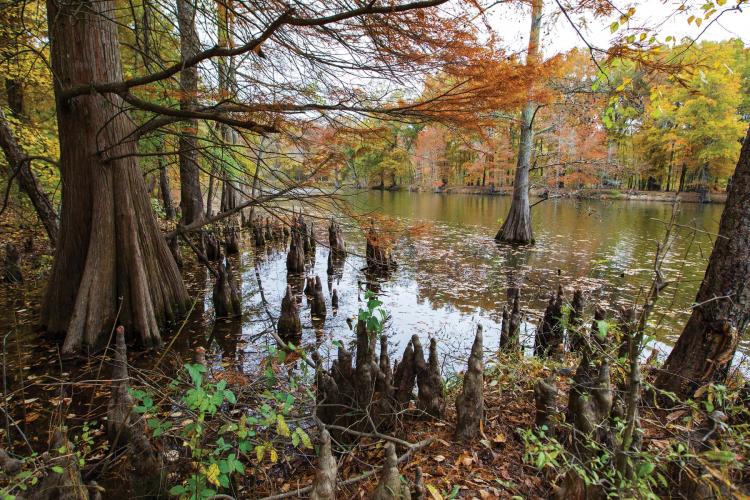
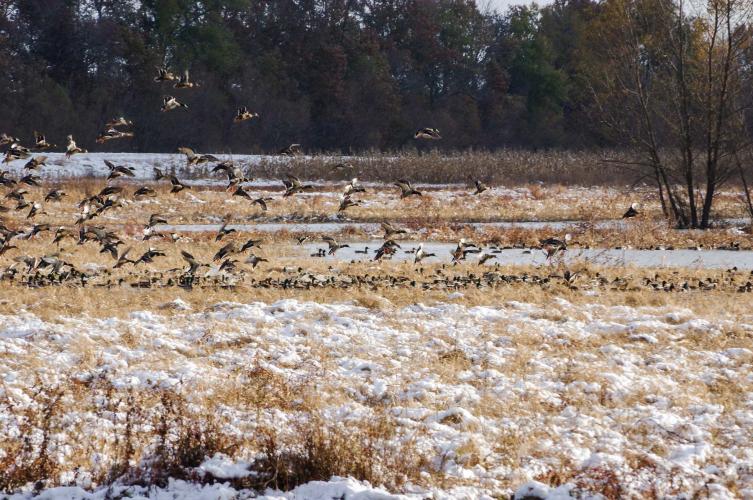
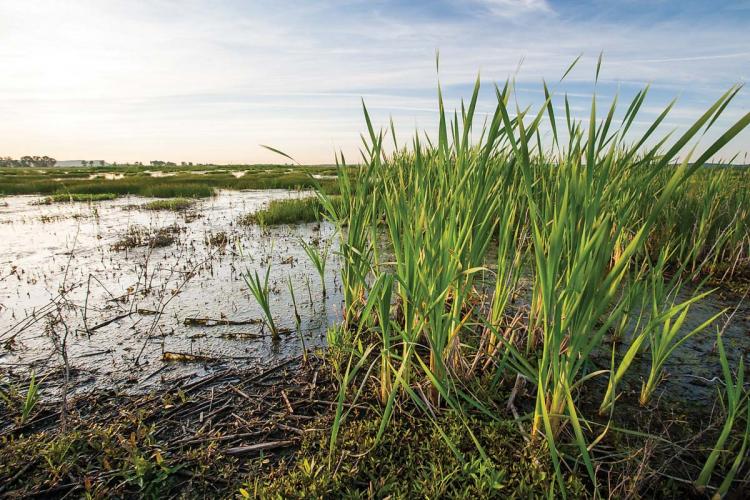

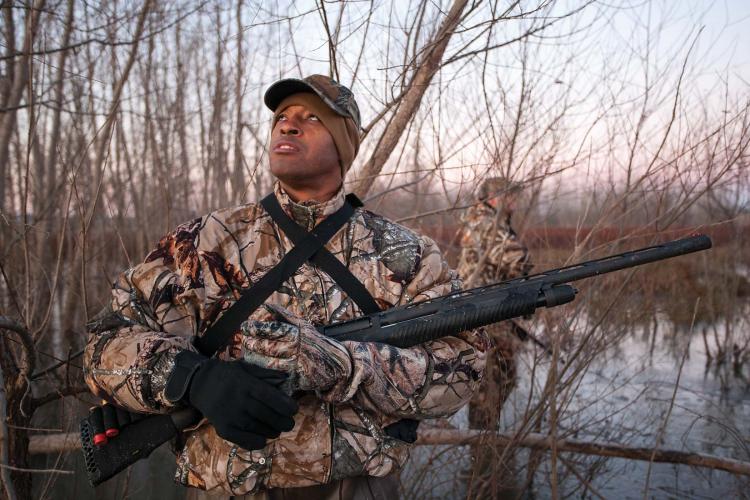
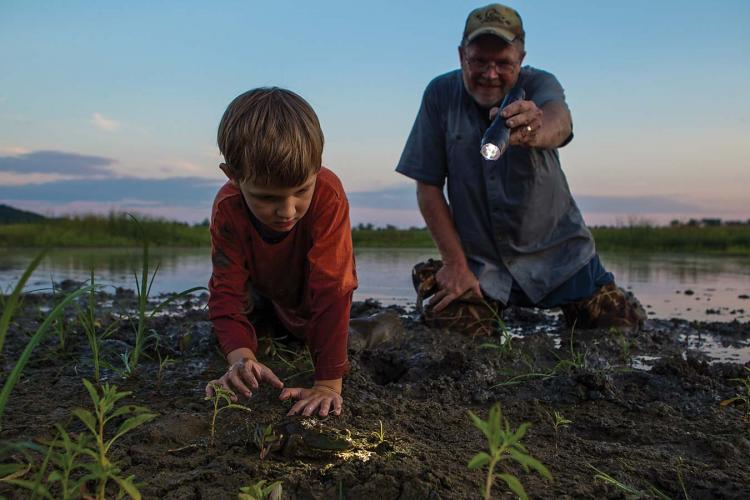
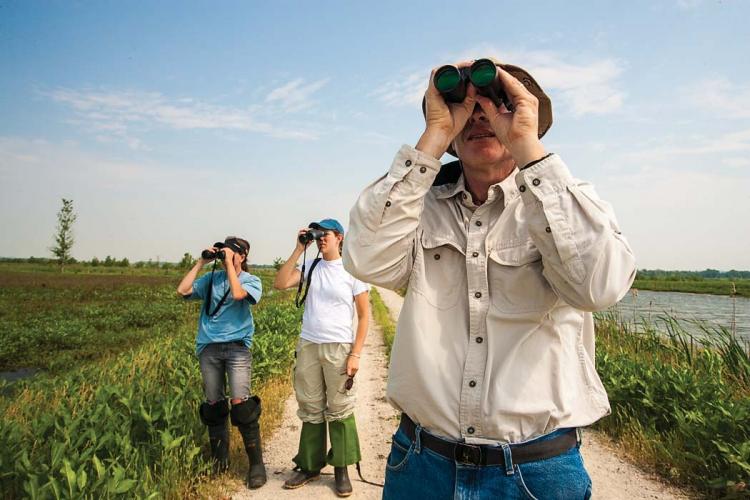
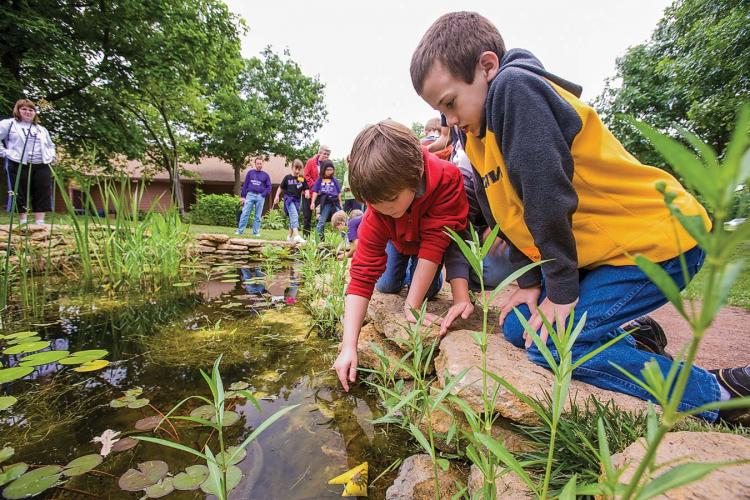
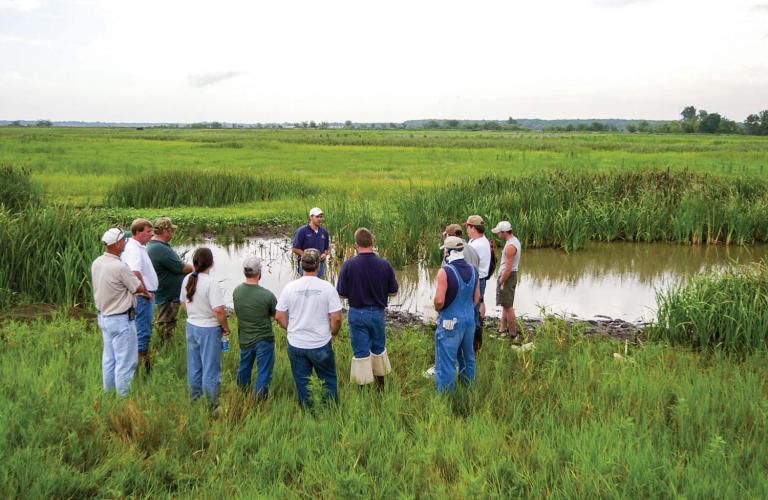
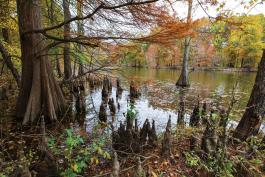
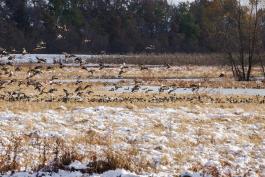
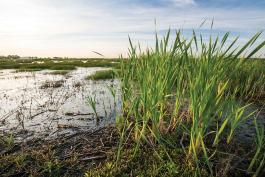
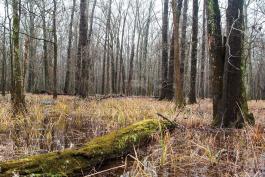
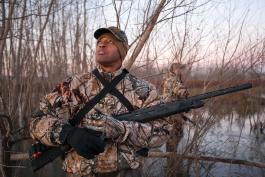
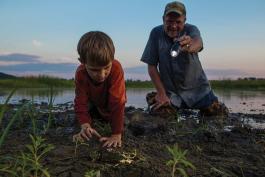
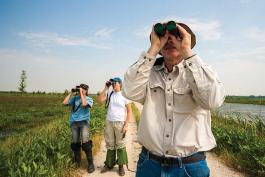

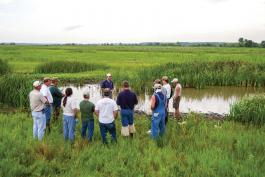
Also In This Issue
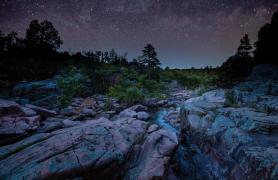

And More...
This Issue's Staff
Art Director - Cliff White
Associate Editor - Bonnie Chasteen
Staff Writer - Heather Feeler
Staff Writer - Kristie Hilgedick
Photographer - Noppadol Paothong
Photographer - David Stonner
Designer - Stephanie Thurber
Circulation - Laura Scheuler






















